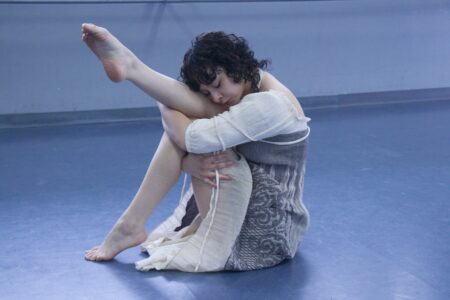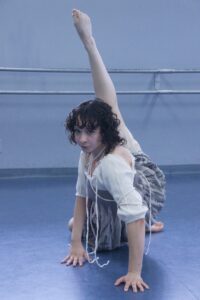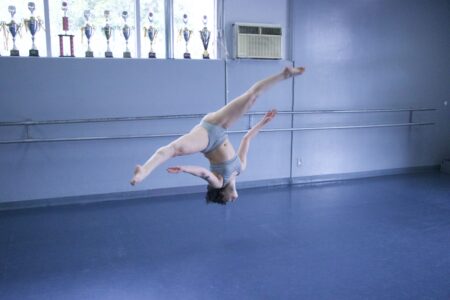
Competitive dancing is often overlooked and considered by many to not even be a sport, but the intense focus, training, and mental capacity it takes to be a competitive dancer says otherwise. Competitive dance takes years of practice, conditioning, auditions, and lots of failure until achievement.
Brittany Lopez, a 22-year-old student at Fullerton College, was a competitive dancer from age of 5 to 18. When she was in her prime for competition, she spent about 20 hours a week in training. Now that she’s in college, she only spends about six hours a week on dance, but she hopes to continue her dance journey at Fullerton College as a dance major and achieve a career as a professional dancer.
While Lopez always prioritizes school over dance, her school work can be overbearing at times. One thing that is super hard for dancers is the extra rehearsals that they don’t know about ahead of time. So, when they are called in for rehearsals but they have a paper due that same night, this becomes an issue. “I pretty much take it day by day. I’ll plan out this day for my classes and I’ll save this day for work,” says Lopez. For Lopez, dance is work.

On April 14, Lopez was in her studio, working on a new routine, wearing loose breathable clothing and her hair was tied up at the top. She runs her dance from start to finish in order to clean it up for her upcoming show. She is working on this dance with three of her peers.
In spring 2023, Lopez choreographed a contemporary dance for the Fullerton College Dance Department’s end of the season show. Her dance training is in ballet, tap, jazz, hip hop, musical theater, contemporary, modern, afro, heels, and tumbling. She is a well rounded dancer who is more than capable to piece together a dance for the show. In order to create choreography, Lopez must analyze a group of dancers and how they move together and create a sequence of steps that looks uniform and clean. Lopez has experience teaching at one of her old studios, so this task comes natural to her.
Competitive dance is a gamble because you never know when your center of gravity is off on competition day, or when your lower back has a knot and you can’t do your front aerial, or your shoulder popped out when you did that back roll and now you can’t support your weight. It can be frustrating when you are ready mentally but you aren’t ready physically. This can lead to serious injuries.

Lopez explains how she has sustained small injuries here and there while dancing, including a sprained wrist and a pulled hamstring, but there is one injury that continues to bother her while dancing and that is her lower back. A lot of dancers share this common injury due to the flexibility needed in their spine to create certain movements with their body.
A study from International Journal of Sports Physical Therapy states, “Dance has a high rate of injury, particularly amongst professional ballet dancers. This injury rate has been linked to short professional careers that often end before the dancer reaches 40 years of age, although the field of dancer retirement has been under-researched.” Injuries that start small, especially in your back, have the capacity to ruin careers.
It is hard to keep a high-spirit when performing or competing because dancers are naturally hard on themselves. You have a life’s worth of training for two minutes and 30 seconds on stage. One mess up and dancers don’t get to try again.
Despite all the struggles that come with being a dancer, the payoff is worth it. “It brings me a sort of self expression and freedom because I’m not a person who’s like really good with my words, so I feel like I definitely express that more with my movement,” Lopez says. “I feel like that helps me kind of get to know myself better and know my body better too.”
Lopez wants to pursue a future in the commercial dance industry as well. Her dream is to be a back-up dancer for a musical artist. Lots of dancers who are chosen for these spots are the dancers who are recognized by big time choreographers, so exposure to events, such as dance conventions help. Lopez mentioned how the Fullerton College Dance Department participates in ACDA, American College Dance Association, every year.

Home dance studios have the tendency to carry a lot of intensity and drama due to how long a dancer is normally there, but Lopez finds the environment in the Dance Department at Fullerton College to be positive and nurturing. “I think it’s honestly a really open and welcoming space. I feel like a lot of dance areas can become toxic environments, so I feel the people here are definitely motivating,” she says. “Even if you are not good they still push you to be better. They definitely watch out for you and make sure you’re taking care of yourself and know what you need to do to be a dancer.”


